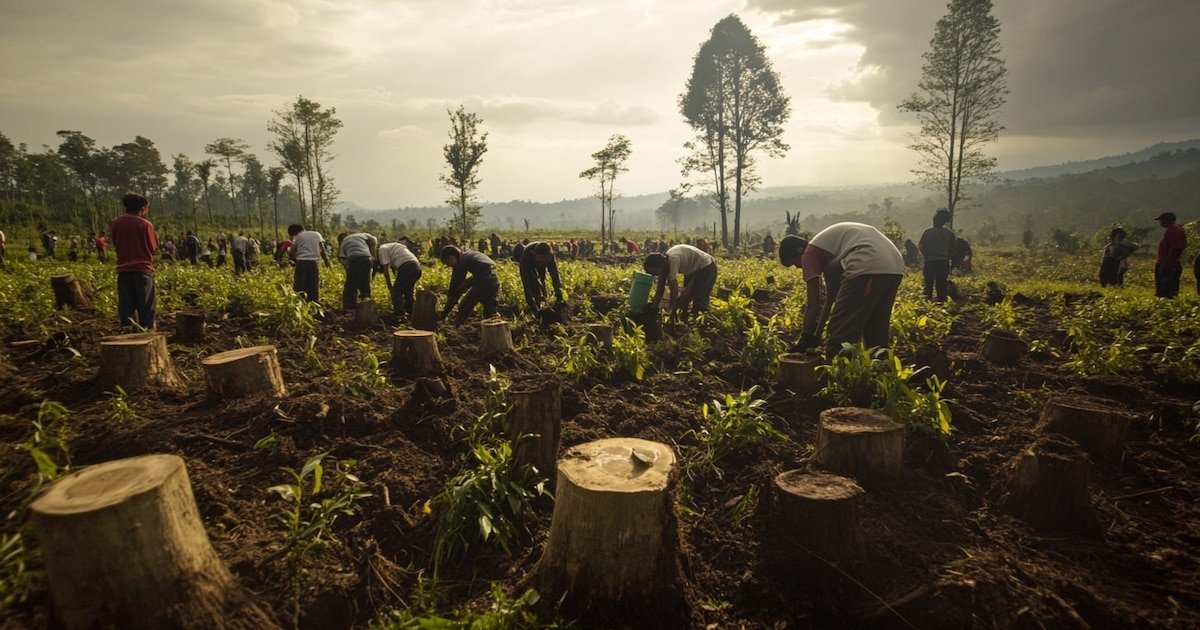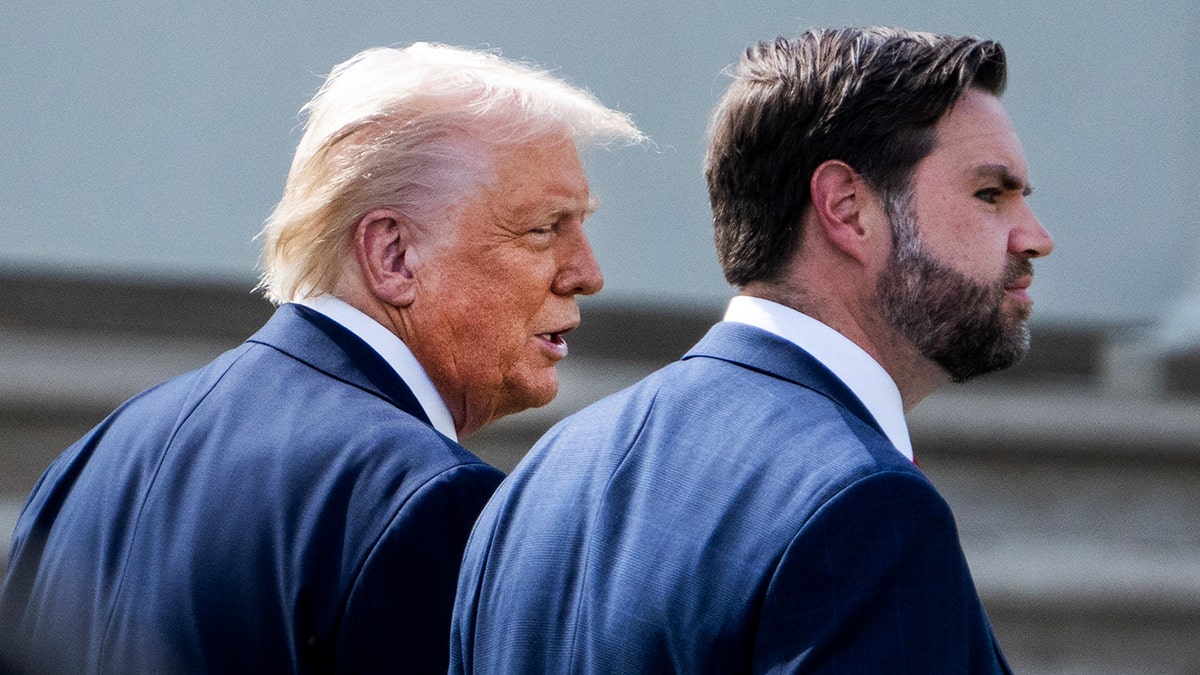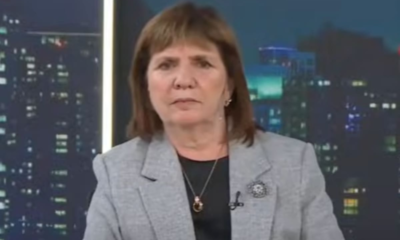INTERNACIONAL
Terror in Gaza: Hamas offers bounties to kill US and local aid workers, group says

NEWYou can now listen to Fox News articles!
EXCLUSIVE — The Gaza Humanitarian Foundation (GHF) is facing a new threat as Hamas terrorists place bounties on the heads of its workers, including U.S. security personnel and local aid staff. According to GHF, Hamas is offering monetary rewards to anyone who kills or injures the organization’s workers.
«We are aware of credible reports that Hamas is openly targeting the Gaza Humanitarian Foundation and those who work with us. According to these reports, Hamas has placed bounties on both our American security personnel and Palestinian aid workers—offering cash rewards to anyone who injures or kills them,» GHF said in a statement provided exclusively to Fox News Digital.
«The targets of Hamas’s brutality are heroes who are simply trying to feed the people of Gaza in the middle of a war.»
Palestinians carry humanitarian aid packages distributed by the Gaza Humanitarian Foundation operated by the U.S.-backed organization in Khan Younis, southern Gaza Strip, Thursday, June 26, 2025. (AP Photo/Abdel Kareem Hana)
HAMAS WORKING TO ‘SABOTAGE’ TRUMP-BACKED AID GROUP WITH ‘FAKE NEWS’: ISRAELI OFFICIAL
GHF also said that Hamas has positioned «armed operatives» near humanitarian zones in an apparent attempt to «disrupt the only functioning aid delivery system in Gaza.»
Earlier this month, Hamas launched a deadly attack on GHF workers, leaving 12 dead. The organization said Hamas also tortured others. The victims were local workers, according to GHF.
U.S. Ambassador to Israel Mike Huckabee issued a statement on the bounties and criticized the United Nations’ silence on Hamas brutality.
«Last month [President Trump] told us to get food to civilians in Gaza, but DON’T let Hamas steal it,» Huckabee wrote on X. «NOT always pretty, but 800k+ unique recipients of food & 1ST TIME they [have] received food FREE since start of war. Hamas has stolen or taxed it & now w/ GHF they CAN’T! Hamas’ main tool to control Gaza is GONE. Hamas has put a bounty on the heads of everyone at GHF — Gazans [and] Americans. The UN remains SILENT.»
PEOPLE IN GAZA ARE THANKING TRUMP FOR AID, LEADER OF US-BACKED GROUP SAYS
In response to Huckabee’s statement, GHF Executive Chairman Rev. Johnnie Moore wrote in his own post on X that reports of the Hamas bounties are based on «new and credible information received today.»
«Hamas would be very unwise to test the resolve of [President Donald Trump],» Moore wrote.
GHF is demanding the international community break its silence on Hamas’ treatment of the organization’s local workers and the American security personnel, many of whom are U.S. veterans.
«Hamas, through these violent and escalating threats, is showing the world it prefers chaos and starvation to peace and aid,» GHF wrote. «We call on international leaders and aid groups to stand with us and with the people of Gaza. The people of Gaza, who show up to our sites every day in defiance of Hamas’s threats and brutality, deserve it.»

Palestinians carry bags and boxes containing food and humanitarian aid packages delivered by the Gaza Humanitarian Foundation, a U.S.-backed organization, in Rafah, southern Gaza Strip, Monday, June 16, 2025. (AP Photo/Abdel Kareem Hana)
CLICK HERE TO GET THE FOX NEWS APP
GHF said it has been able to distribute approximately 49,915,822 meals so far. The organization recently received a funding boost after the U.S. State Department announced it had approved $30 million in funding for the group.
«We call on other countries to also support the GHF, the Gaza Humanitarian Foundation, and its critical work,» State Department Principal Deputy Spokesperson Tommy Piggot said in a briefing on June 26. «From day one, we said we are open to creative solutions that securely provide aid to those in Gaza and protects Israel. The support is simply the latest iteration of President Trump’s and Secretary Rubio’s pursuit of peace in the region.»
INTERNACIONAL
Innovación alimentaria y solidaridad: cómo las primeras civilizaciones afrontaron mil años de variabilidad climática

Una investigación multidisciplinaria basada en análisis arqueológicos e isotópicos demostró que las comunidades africanas, establecidas por algunos estudios científicos como cuna de la humanidad, lograron resistir más de 10.000 años de inestabilidad climática a través de prácticas alimentarias diversificadas y lazos comunitarios sólidos.
El trabajo, citado por The Conversation, examinó restos humanos y animales de 187 yacimientos en todo el continente africano, brindando una perspectiva integral sobre la evolución de los sistemas de subsistencia en distintos contextos ecológicos. La clave de esta resiliencia no fue un modelo único de agricultura o ganadería, sino la capacidad de adaptación mediante estrategias complementarias.
El equipo de investigación adoptó un enfoque continental, utilizando datos de isótopos estables presentes en huesos antiguos. Este método permitió reconstruir los patrones dietarios y las estrategias de subsistencia empleadas por distintas sociedades africanas durante el Holoceno.
Los resultados fueron clasificados en “nichos isotópicos”, es decir, categorías que agrupan modos de vida según características ambientales y culturales. Esto permitió observar que el desarrollo alimentario no siguió una línea progresiva única, sino que se construyó como un mosaico de respuestas adaptativas a condiciones cambiantes.
Se trata del primer estudio que rastrea a esta escala la historia alimentaria del continente a través de análisis isotópicos, ofreciendo una nueva mirada sobre cómo se forjaron los sistemas de producción en distintos momentos de la historia.

El trabajo destaca que la supervivencia ante los vaivenes climáticos se sustentó en la combinación de prácticas como el pastoreo, la agricultura, la pesca y la recolección. En lugar de depender de un solo modelo intensivo, las comunidades integraban varias actividades de manera simultánea, ajustándolas a los contextos locales.
Este enfoque multiestratégico se verificó tanto entre distintas regiones como dentro de las propias comunidades. El principio rector era la flexibilidad: modificar las prácticas frente a alteraciones del entorno sin adherirse de forma exclusiva a una sola fuente de subsistencia.
El equipo de científicos subrayó que la resiliencia no dependía del método “más eficiente” en términos productivos, sino de mantener abiertas múltiples posibilidades que pudieran responder a crisis o transformaciones ecológicas.
Los datos permiten observar cómo las comunidades adaptaron sus sistemas alimentarios a lo largo del tiempo y el espacio. En el sur de África, en territorios correspondientes a Botswana y Zimbabue, grupos sociales combinaron el cultivo, la recolección de productos silvestres y la cría de ganado, especialmente tras el fin del llamado Periodo Húmedo Africano, hace unos 5.500 años.

En el valle del Nilo, especialmente en Egipto y Sudán, las poblaciones desarrollaron sistemas mixtos que incluían la agricultura de cereales, la pesca, la producción láctea y la elaboración de bebidas fermentadas. Estas combinaciones respondían a las condiciones locales y a la disponibilidad de recursos.
Los sistemas pastoriles —vinculados al cuidado y movilidad del ganado— fueron particularmente frecuentes y diversos. La variedad de señales químicas en los restos arqueológicos sugiere una alta capacidad de ajuste a entornos contrastantes, desde zonas áridas hasta regiones montañosas.
La investigación concluye que la diversidad productiva no hubiera sido suficiente sin la existencia de vínculos comunitarios sólidos. Durante períodos de estrés, como la transición climática que puso fin al Periodo Húmedo Africano, se intensificaron los intercambios de alimentos, conocimientos y trabajo entre distintos grupos.
Estas formas de cooperación permitieron compartir tierras y recursos, así como transmitir saberes sobre prácticas sostenibles. Por ejemplo, en ciertas regiones, los animales eran criados no como principal fuente alimentaria, sino como respaldo ante la pérdida de cultivos, una estrategia que funcionaba como red de seguridad.

Esta organización colaborativa favoreció la continuidad de los sistemas pastoriles incluso durante los últimos mil años, especialmente en regiones donde la aridez se convirtió en un rasgo dominante del paisaje.
El estudio plantea una crítica directa a las políticas de desarrollo que promueven modelos intensivos y estandarizados. Según los investigadores, esas estrategias no consideran la diversidad ecológica y social que caracteriza muchas regiones del mundo, en especial en el continente africano.
La experiencia histórica documentada en este análisis sugiere que los sistemas alimentarios flexibles, integradores y sostenibles son más eficaces para enfrentar escenarios de cambio climático. Lejos de imponer modelos únicos, las políticas deberían adaptarse a las realidades locales y promover la colaboración intercomunitaria.
El artículo cita que las sociedades africanas históricamente construyeron sus decisiones alimentarias “en sintonía con la tierra y el mar, no en oposición a ellos”. En ese tono, los autores del estudio indicaron que la trayectoria de las comunidades africanas representa un referente útil para enfrentar los desafíos contemporáneos. Frente a un contexto global de incertidumbre climática, las estrategias milenarias de adaptación y cooperación pueden ofrecer una guía para diseñar sistemas más resilientes y sostenibles.
gente,prepara alimentos,programa de apoyo nutricional de zimbabue
INTERNACIONAL
Michelle Obama portraitist’s exhibit with trans Statue of Liberty pulled after pressure from Vance

NEWYou can now listen to Fox News articles!
EXCLUSIVE: Artist Amy Sherald canceled her upcoming exhibit featuring a portrait of a transgender Statue of Liberty at the Smithsonian’s National Portrait Gallery after Vice President JD Vance raised concerns the show included woke and divisive content, Fox News Digital has learned.
President Donald Trump signed an executive order in March that placed Vance in charge of overseeing the removal of programs or exhibits at Smithsonian museums that «degrade shared American values, divide Americans based on race, or promote programs or ideologies inconsistent with Federal law and policy.»
Vance said Sherald’s «American Sublime» exhibit violated Trump’s executive order and was an example of woke and divisive content during a meeting June 9 with the Board of Regents, a source familiar with the meeting told Fox News Digital.
ARTIST PULLS ART FROM SMITHSONIAN GALLERY AFTER MUSEUM TRIES TO ALTER HER TRANS STATUE OF LIBERTY PAINTING
Arewà Basit stands in front of Amy Sherald’s painting, «Trans Forming Liberty» on display at the Whitney Museum of American Art in Manhattan, N.Y., April 2, 2025. (Tiffany Sage/BFA/Shutterstock)
«Vice President Vance has been leading the effort to eliminate woke indoctrination from our beloved Smithsonian museums,» an administration official said in an email to Fox News Digital. «On top of shepherding the One Big Beautiful Bill through the Senate and helping President Trump navigate international crises, the vice president has demonstrated his ability to get President Trump’s priorities across the finish line.»
Sherald, best known for painting former first lady Michelle Obama’s official portrait in 2018, announced Thursday she was pulling her show, «American Sublime,» from the Smithsonian’s National Portrait Gallery slated for September, The New York Times first reported.
Sherald said she was rescinding her work from the exhibition after being told that the National Portrait Gallery had some concerns about featuring the portrait of the transgender Statue of Liberty during the show. The painting, «Trans Forming Liberty,» depicts a trans woman with pink hair wearing a blue gown.
TRUMP WHITE HOUSE CALLS OUT SMITHSONIAN FOR PUSHING ‘ONE-SIDED, DIVISIVE POLITICAL NARRATIVES

Amy Sherald attends the 2023 Tribeca Ball at the New York Academy of Art April 4, 2023, in New York City. (Santiago Felipe/Contributor)
«These concerns led to discussions about removing the work from the exhibition,» Sherald said in a statement, The New York Times first reported Thursday. «While no single person is to blame, it’s clear that institutional fear shaped by a broader climate of political hostility toward trans lives played a role.
«This painting exists to hold space for someone whose humanity has been politicized and disregarded. I cannot in good conscience comply with a culture of censorship, especially when it targets vulnerable communities.
«At a time when transgender people are being legislated against, silenced and endangered across our nation, silence is not an option,» Sherald added. «I stand by my work. I stand by my sitters. I stand by the truth that all people deserve to be seen — not only in life, but in art.»
The Smithsonian did not immediately respond to a request for comment regarding Vance’s involvement in the matter.
DEFUNDING DEI: HERE’S HOW THE TRUMP ADMINISTRATION HAS UNDONE BIDEN’S VERY PRIZED PROGRAMS

President Donald Trump and Vice President JD Vance after a ceremony with the 2025 national champion Ohio State Buckeyes on the South Lawn of the White House April 14, 2025. (Tom Williams/CQ-Roll Call, Inc via Getty Images)
The White House said the removal of Sherald’s exhibit is a «principled and necessary step» toward cultivating unity at institutions like the Smithsonian.
CLICK HERE TO GET THE FOX NEWS APP
«The ‘Trans Forming Liberty’ painting, which sought to reinterpret one of our nation’s most sacred symbols through a divisive and ideological lens, fundamentally strayed from the mission and spirit of our national museums,» Trump special assistant Lindsey Halligan said in a statement to Fox News Digital.
«The Statue of Liberty is not an abstract canvas for political expression. It is a revered and solemn symbol of freedom, inspiration and national unity that defines the American spirit.»
Other members of the Smithsonian’s Board of Regents include the Chief Justice of the United States, John Roberts, along with senators John Boozman, R-Ark.; Catherine Cortez Masto, D-Nev.; and Gary Peters, D-Mich., along with several other House members.
Fox News’ Gabriel Hays contributed to this report.
INTERNACIONAL
Hambre, muerte y desesperación en Gaza: ¿Por qué no llega la ayuda humanitaria que tanto se necesita?

Ataques en centros de entrega de alimentos
Toneladas de ayuda bloqueada
Qué dice Israel

 POLITICA2 días ago
POLITICA2 días agoMáximo Kirchner declaró una fortuna de 8.300 millones de pesos: representa un 76% más que el año anterior

 POLITICA1 día ago
POLITICA1 día agoLa justicia de Santa Cruz desafío a la Corte Suprema e incluyó a Cristina Kirchner en el padrón electoral

 POLITICA2 días ago
POLITICA2 días agoQué dijo Javier Milei en la Derecha Fest: las frases más impactantes


























